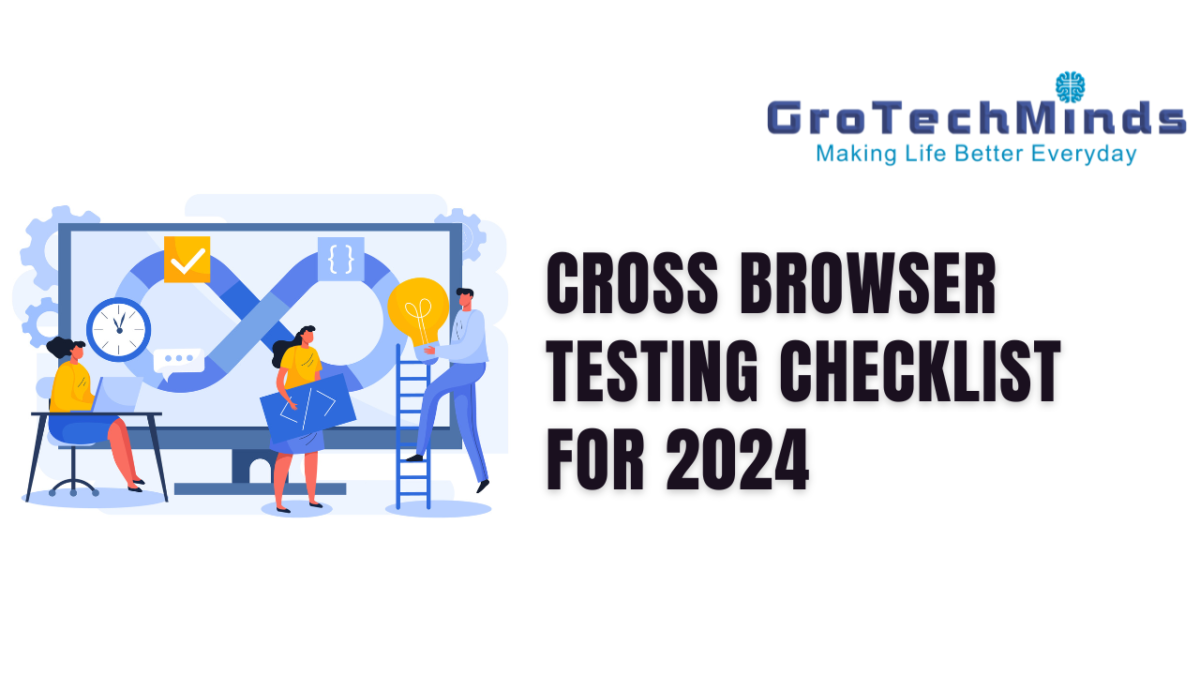Cross Browser Testing Checklist for 2024

The number of gadgets and internet browsers has significantly increased over time. Over 16 billion mobile devices are in use worldwide at the moment. By the end of 2025, this number is projected to rise to 18.22 billion. Cross-browser testing is crucial because of these modifications as well as the growth of the consumer and experience economies.
What Is Cross-Browser Testing?
One kind of non-functional testing called cross-browser testing verifies that programs work with widely used browsers including Google Chrome, Safari, Edge, Mozilla Firefox, and Internet Explorer. Additionally, it guarantees flawless operation regardless of the devices, operating systems, and browsers used to access the program.
Checklist for Cross-Browser Testing
These days, having an understandable and thorough cross-browser testing checklist is essential for some reasons:
- Customers use a variety of devices.
- Browser usage is skyrocketing.
- Updates and upgrades are happening more often than before.
It’s also important to note that agile development approaches have become popular in design and development. Annual updates have been replaced by continuous integration and DevOps with hourly or daily updates. But every code update also increases the chance of OS, device, and browser incompatibilities. As a result, differences across browsers might range from negligible to enormous in terms of features like layout, quality, content, and connectivity.
Cross-browser compatibility testing, thus, guarantees that the application or website is usable by the widest possible user base. These are some essential items that ought to be on the checklist for cross-browser testing.
Content Testing
material testing makes sure that every piece of material is comprehensible and displays properly across all browsers. Cross-browser testing makes sure typefaces are readable, audio and video files function as intended, and photos are shown at normal resolutions. It must also ascertain how long it takes for a page’s largest element to load.
The content that is shown on the website should be verified using the content testing checklist. As a result, it ought to confirm the following:
Usability: Determine whether the content is correctly displayed and readable in a variety of browsers.
Readability: Determine if the information is accurate, relevant, and simple to understand.
Accessibility: Check to see if everyone, including those with disabilities, can easily access the content.
Searchability: Determine if the information can be found through a search and note any obstacles that may be impeding its popularity.
Testing of Layouts
Layout testing confirms resolution, reliability, availability, and resource scaling while identifying obvious inconsistencies.
Essentially, layout testing ought to verify the:
- glaring discrepancies such as wrong color, broken boxes, misprinted text surrounding displays, etc.
- The fields’ and blocks’ alignment
- stability in the background and make sure these don’t float
- website is seen across various browser resolutions
- accurate alignment of the data
- compatibility of audio and video formats with browsers
- Reliability of layout and responsiveness of the website
- uniformity of text, graphics, and all other design components across browsers
- Source code if special characters are used at all
- If they function as intended, scroll bars, zoom-in and zoom-out features, and drop-down fields
- Simple navigating across websites for accuracy and speed
- website’s tables and grids’ alignment
Assessment of Functionality
Functionality evaluation confirms that when browsers update, an application’s or website’s capabilities and functionalities stay the same. In order to increase product stickiness, a cross-browser testing checklist should assess a few crucial factors. The functionality evaluation checklist should essentially:
- Check to see if your browser supports all plug-ins.
- Examine the features of Ajax and jQuery.
- Check the forms and fields for compatibility with each browser.
- Verify important features such as file import/export, form submission, data storage, etc.
- Make sure Flash and animation function properly.
- Check that the script is valid for all browsers.
- Check for compatibility with all browsers and confirm how the peripherals—keyboard, mouse, etc.—interact with the system.
Assessment of Performance
Cross-browser compatibility Testing in manual testing performance evaluations guarantees that the websites or applications are available, responsive, and performance-driven. Effectively, a website’s performance shouldn’t be impacted by a bigger load or more concurrent visitors.
By determining whether and how the program varies among browsers, performance evaluation enables developers to make necessary corrections.
Thus, performance review ought to:
- Verify that even with increased load, the application’s performance stays the same across browsers.
- Examine whether the program is reliable across browsers when there is a high load and a rise in the number of users using it at once.
- Verify that the plugins and special applications function uniformly in all browsers.
- Determine whether the time required to send a request and obtain a response is consistent across browsers by evaluating the response and wait times.
- Determine the percentage of requests that result in errors relative to all requests sent in order to determine the error rates among browsers.
- Check to see whether the CPU usage of the browser changes.
Additional General Factors to Evaluate
Cross-browser testing should take into consideration determining whether all APIs connect to all browsers, as the use of APIs is growing. Important testing areas include validating the SSL certificate for each of the designated & targeted browsers, as well as CSS, HTML, and XHTML.
Implementing cross-browser testing manually can be quite challenging and time-consuming. Thus, comprehensive cross-browser compatibility testing requires test automation. But developer time is wasted on building test automation scripts, keeping up with test beds, suites, and infrastructure, upgrading scripts, and Manual testing intricate paths.
With the aid of this no-code platform, developers and testers may boost testing velocity and expand their testing footprint. Additionally, by combining online, API, mobile, and Manual testing in software testing, this cutting-edge testing platform enables businesses to expedite automation through AI-driven test development and maintenance. Additionally, the platform interfaces with Jenkins and Jira with ease, ensuring consistent continuous delivery.










